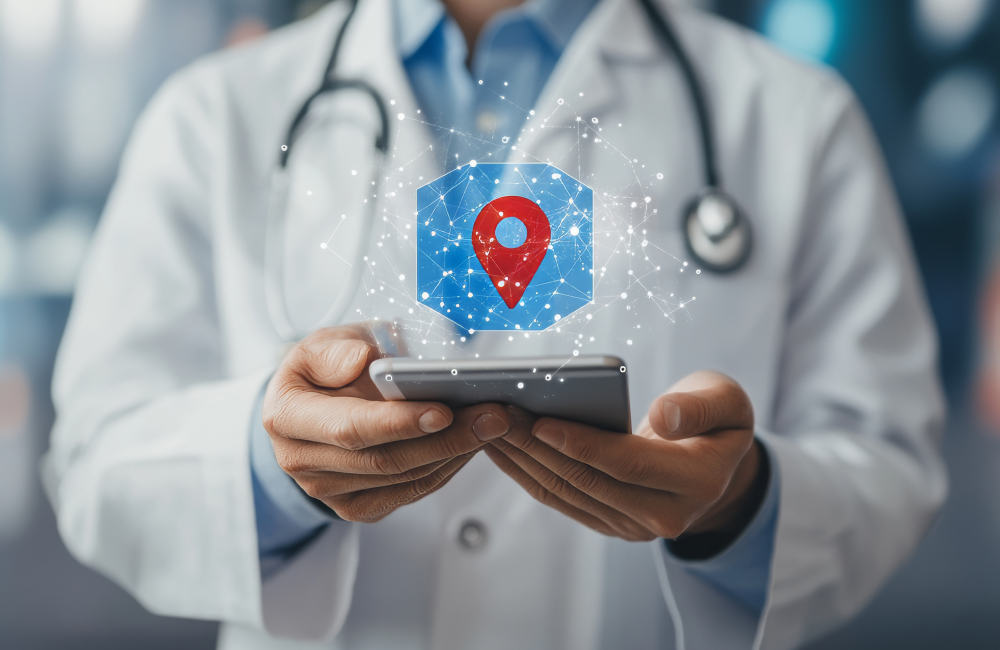
In today’s tech-driven world, healthcare providers must adopt innovative strategies to connect with patients and remain competitive. One of the most effective tools available is geofencing in healthcare, a technology that uses location data to deliver targeted, personalized marketing messages. Combined with location-based marketing healthcare strategies, geofencing empowers medical providers to reach local audiences, increase engagement, and drive patient visits.
Let’s explore how healthcare organizations can utilize geofencing and location-based marketing effectively to attract and retain patients.
What is Geofencing in Healthcare?
Geofencing involves creating a virtual boundary around a specific location, such as a hospital, clinic, or medical practice. When a person enters or exits this boundary with their mobile device, they can receive targeted ads, notifications, or messages. In healthcare, this technique is part of a broader healthcare digital marketing strategy to connect with nearby audiences and deliver timely, relevant information.
For example, a clinic could use geofencing ads for clinics to promote flu vaccinations to individuals who live or work within a specific radius. Similarly, a hospital can launch geofencing campaigns for hospitals to attract patients by advertising services like urgent care or wellness programs.
The Benefits of Geofencing and Location-Based Marketing in Healthcare
- Targeting the Right Audience
With location-based patient targeting, healthcare providers can reach individuals based on their physical location. This ensures that marketing efforts focus on people who are most likely to visit the facility. For instance, a dermatologist can target individuals near a pharmacy with promotions for skin care consultations. - Increasing Patient Visits
Geofencing helps increase patient visits with geofencing by delivering actionable messages when patients are most likely to need care. A dental practice can send reminders about check-ups to individuals who pass by regularly, improving appointment bookings. - Personalized and Relevant Messaging
Patients value tailored content. Using proximity marketing in healthcare, providers can share location-specific promotions, such as discounts on health check-ups or fitness programs, creating a sense of immediacy and relevance. - Cost-Effective Local Advertising
Compared to traditional advertising, localized healthcare advertising allows providers to allocate budgets more efficiently. By targeting a specific geographic area, healthcare facilities can reduce wasted ad spend and improve ROI.
How to Implement Geofencing in Healthcare Marketing
- Define Your Target Audience
Start by identifying your ideal audience. Are you targeting young families for pediatric care, seniors for geriatric services, or working professionals for wellness programs? Tailor your geofencing and geotargeting for medical practices accordingly. - Set Up Geofences Strategically
Select locations where your target audience is likely to spend time. This could include neighborhoods, schools, gyms, or pharmacies. For example, a cardiology clinic might place geofences around fitness centers to promote heart health check-ups. - Craft Engaging Content
Use mobile-friendly ads and messages that capture attention. Highlight specific services, promotions, or events. For instance, a hospital could advertise a free health seminar using geolocation marketing for medical providers to attract attendees. - Use Analytics to Refine Campaigns
Monitor the performance of your geofencing campaigns for hospitals to track key metrics like click-through rates, conversions, and patient visits. Use this data to adjust your strategy and improve outcomes over time.
Real-World Example: Successful Geofencing in Healthcare
A mid-sized urgent care center implemented mobile marketing for healthcare by placing geofences around local pharmacies and grocery stores. The campaign promoted walk-in flu shots during flu season. As a result, patient visits increased by 25%, demonstrating the power of patient engagement through geofencing.
Similarly, a hospital used geofencing ads for clinics to advertise same-day appointments for physical therapy. By targeting office parks and gyms, they successfully reached working professionals and athletes, increasing appointment bookings by 30%.
Best Practices for Geofencing and Location-Based Marketing
To maximize the impact of your geofencing campaigns, follow these best practices:
- Be Transparent: Clearly communicate how patient data will be used to build trust.
- Focus on Value: Provide actionable and meaningful content, such as health tips or appointment reminders.
- Stay Compliant: Ensure your campaigns adhere to privacy regulations like HIPAA and GDPR.
- Leverage Proximity Data: Use real-time location data to deliver timely messages that resonate with your audience.
Why Healthcare Providers Need Geofencing Today
In an era of digital-first interactions, geofencing and location-based marketing healthcare offer healthcare providers a competitive edge. These strategies enable medical facilities to:
- Build stronger connections with local communities.
- Drive patient engagement and loyalty.
- Optimize marketing budgets for better ROI.
For healthcare providers looking to enhance their digital marketing efforts, geofencing offers an opportunity to create personalized, impactful campaigns that improve patient care and boost business growth.
Conclusion
Geofencing and proximity marketing in healthcare have revolutionized how providers reach and engage patients. By delivering localized, relevant, and timely messages, healthcare organizations can build stronger connections with their audiences while improving their marketing ROI.
If you’re ready to implement cutting-edge healthcare marketing with geofencing, start by partnering with experts who understand the unique needs of the healthcare industry. With the right strategy, geofencing can transform how you attract, engage, and retain patients, ensuring long-term success for your practice.
